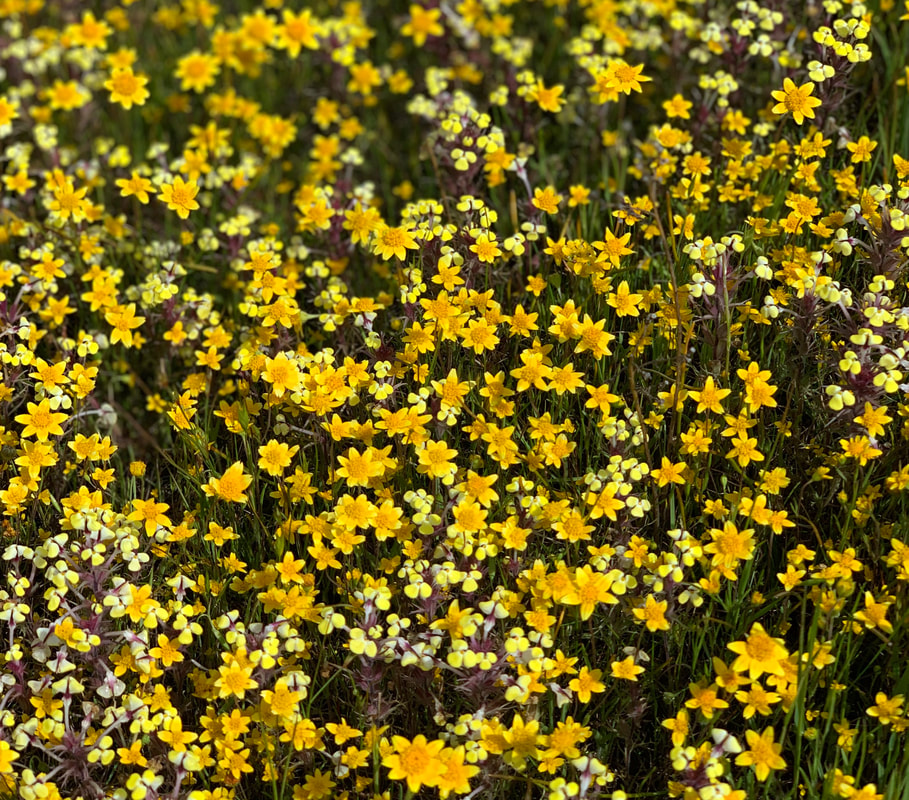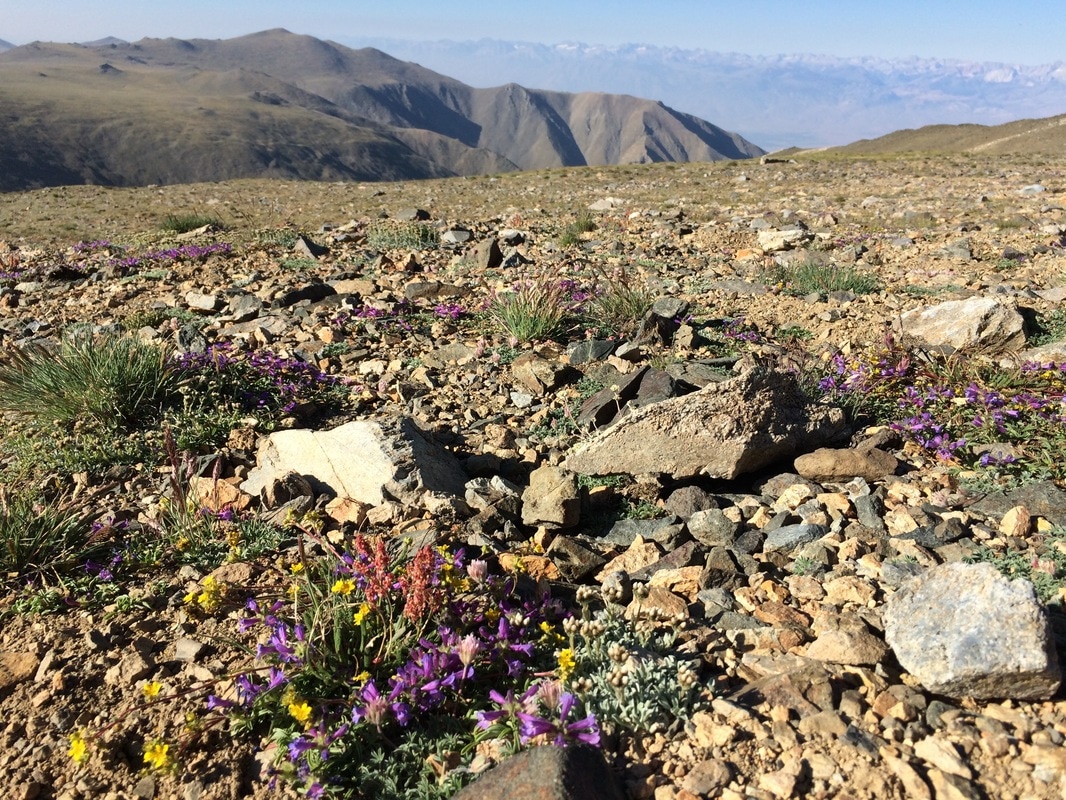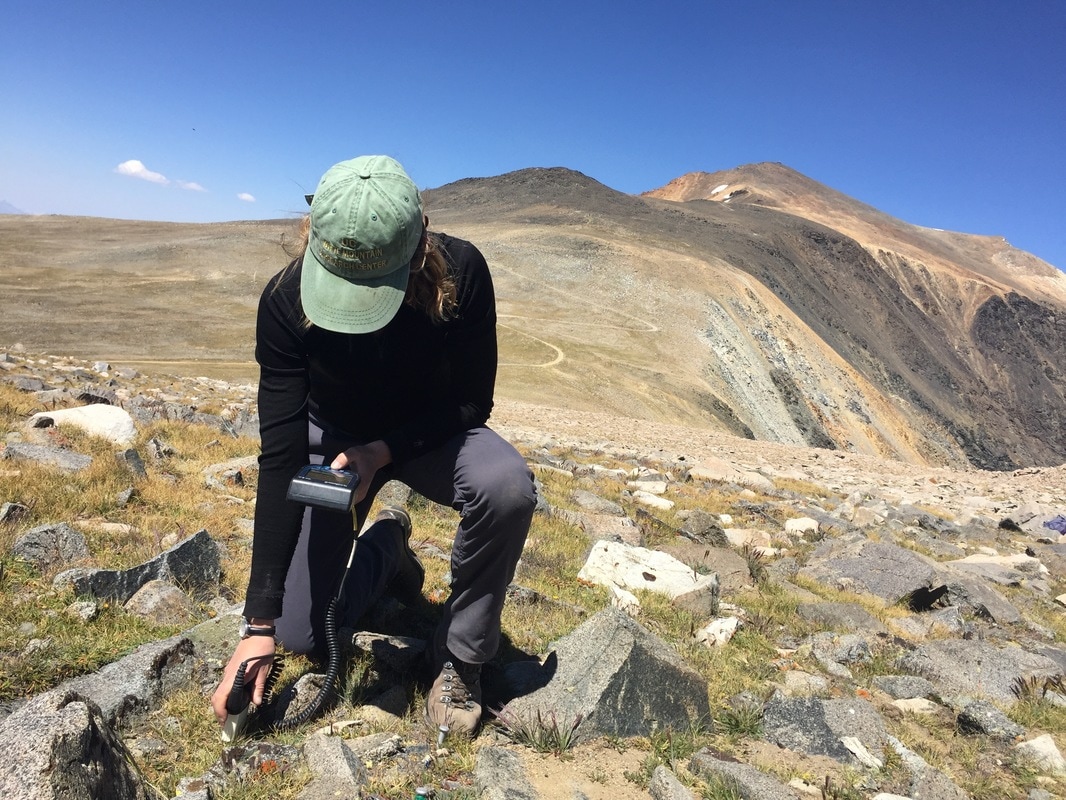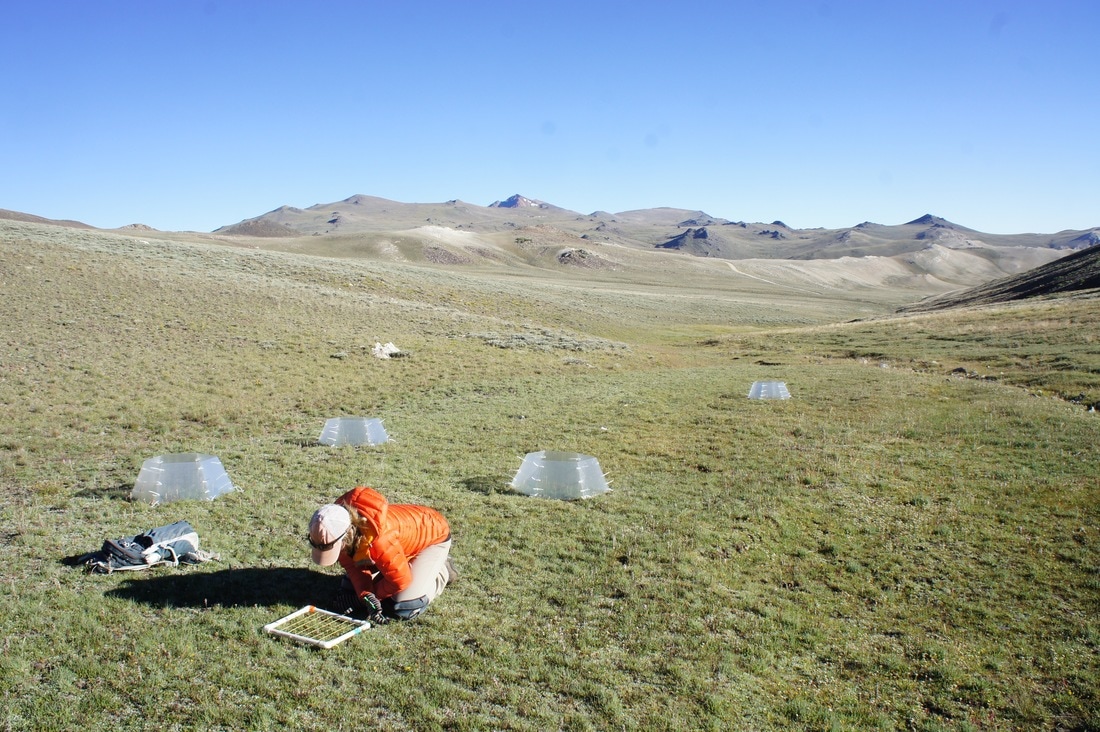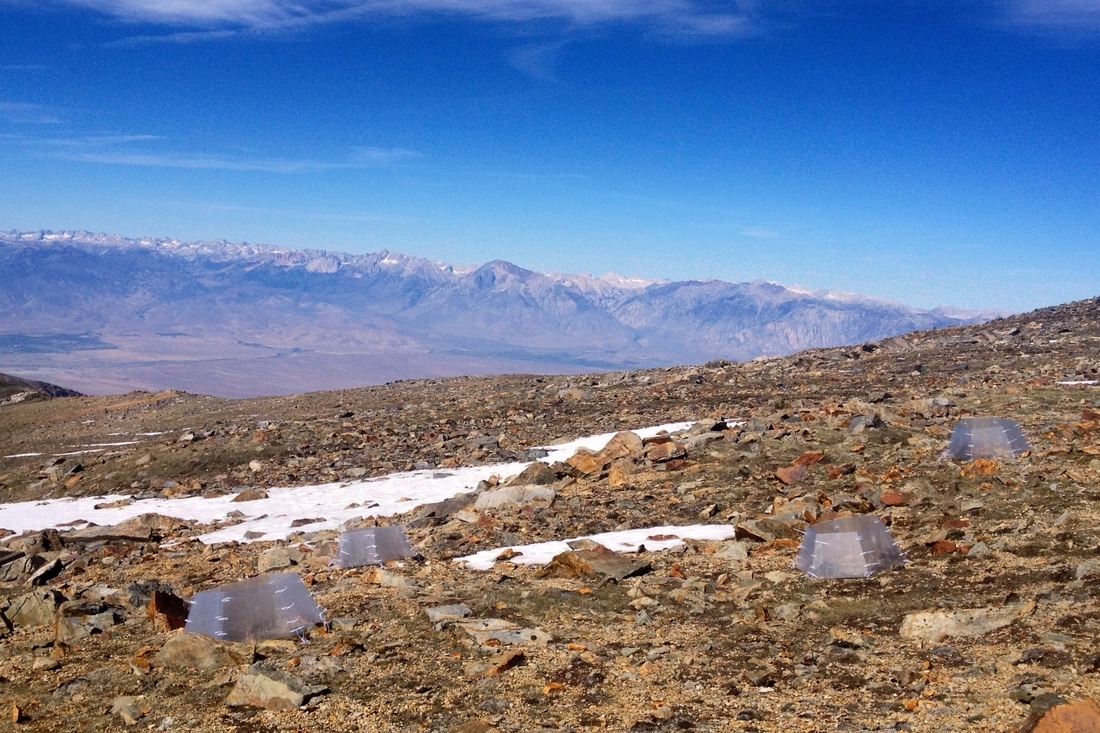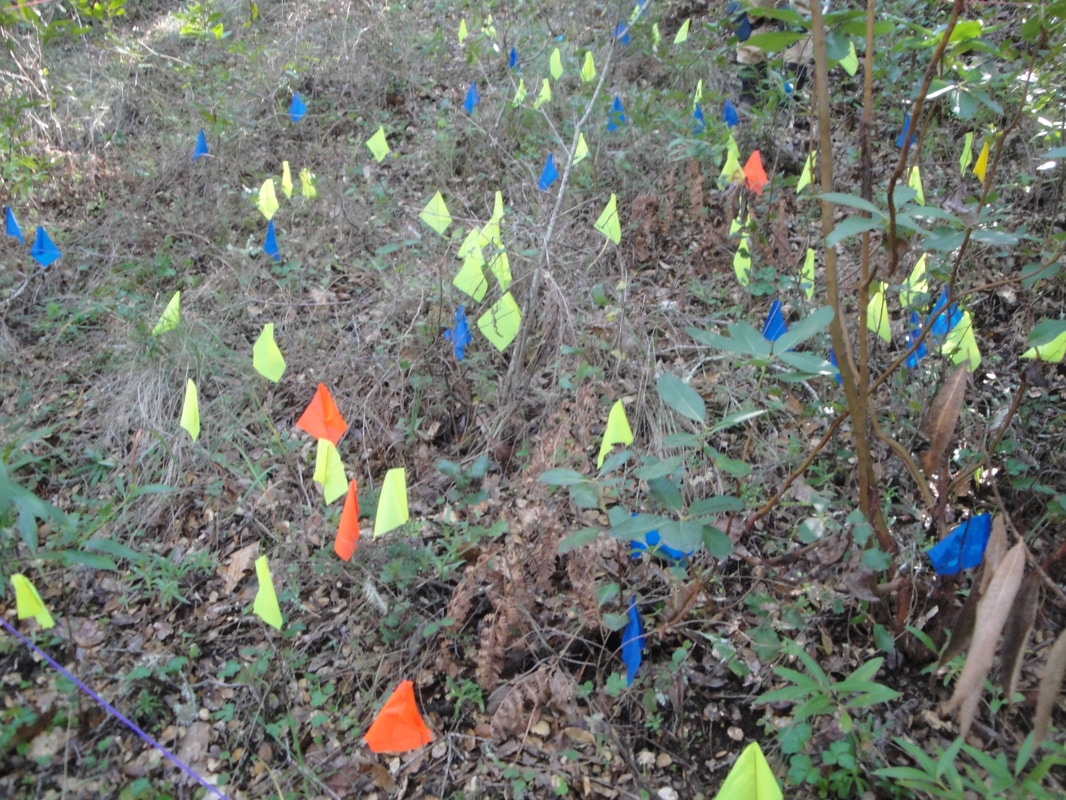My research focuses on the ecological and evolutionary drivers of plant distributions in heterogenous landscapes. I investigate how individuals, populations, functional groups, and communities respond to fine-scale spatiotemporal variation across their geographic ranges. By integrating across biological scales, I can understand how life-stage specific responses lead to range-wide population stability, how species-specific responses influence patterns of community turnover, and how evolutionary forces may mediate these responses over short timescales. My work focuses on the dynamics of plant distributions across the arid and mountainous Western United States, including in Mediterranean forests, vernal pools, and the alpine tundra of the Colorado Rockies, Sierra Nevada, and White Mountains of California. With my position at USGS North Central Climate Adaptation Center I am excited to bring my field and quantitate skills to questions about management opportunities for adapting to climate change in this region.
My post-docotoral research in the Emery Lab explored the eco-evolutionary dynamics of plant habitat specialization and dispersal. Plant dispersal strategies have important consequences for species distribution patterns, biotic interactions, and the range of environmental variation experienced by plant lineages over ecological and evolutionary timescales. Spatio-temporal variability in both abiotic and biotic conditions favors dispersal, especially for highly specialized species, due to an increased probability of a currently suitable habitat becoming unsuitable. Our project empirically tests these proposed relationships between habitat specialization, landscape heterogeneity, and selection on dispersal strategies in three Lasthenia species (Asteraceae) that co-occur in vernal pool landscapes of the California Floristic Province. Results to come on this soon!
My post-docotoral research in the Emery Lab explored the eco-evolutionary dynamics of plant habitat specialization and dispersal. Plant dispersal strategies have important consequences for species distribution patterns, biotic interactions, and the range of environmental variation experienced by plant lineages over ecological and evolutionary timescales. Spatio-temporal variability in both abiotic and biotic conditions favors dispersal, especially for highly specialized species, due to an increased probability of a currently suitable habitat becoming unsuitable. Our project empirically tests these proposed relationships between habitat specialization, landscape heterogeneity, and selection on dispersal strategies in three Lasthenia species (Asteraceae) that co-occur in vernal pool landscapes of the California Floristic Province. Results to come on this soon!
In my dissertation work, I focused on how spatial variation in demography shapes plant distributions. I investigated the relationship between demographic rates and topographically-shaped climate conditions across the entire range of an alpine plant in the White Mountains, CA. I built population models with both experimental (fully-factorial heating and watering) and non-experimental demography data from populations across my focal species range.
For compensatory demographic responses to warming:
https://doi.org/10.1111/ele.13693
For range-wide relationships between demography and microclimate:
https://nph.onlinelibrary.wiley.com/doi/abs/10.1111/nph.15565
For an opinion piece on integrating geographic scale and climate complexity into range dynamics:
https://onlinelibrary.wiley.com/doi/abs/10.1111/gcb.14897
For community responses to warming in the White Mountains:
https://www.tandfonline.com/doi/full/10.1080/15230430.2019.1618148?scroll=top&needAccess=true&
In addition to my dissertation research in the White Mountains, I also aided in the establishment and monitoring of woody vegetation demography plots in Northern California oak woodlands as part of the Terrestrial Biodiversity and Climate Change Collaborative. The baseline community patterns across the landscape heterogeneity were investigated here https://academic.oup.com/aobpla/article/doi/10.1093/aobpla/plw049/2609608
I am also the co-Director of the non-profit GLORIA Great Basin that works under the larger GLORIA network to monitor global responses of mountain environments to climate change. Our first paper on this project can be found here https://bsapubs.onlinelibrary.wiley.com/doi/10.1002/ajb2.1376
For compensatory demographic responses to warming:
https://doi.org/10.1111/ele.13693
For range-wide relationships between demography and microclimate:
https://nph.onlinelibrary.wiley.com/doi/abs/10.1111/nph.15565
For an opinion piece on integrating geographic scale and climate complexity into range dynamics:
https://onlinelibrary.wiley.com/doi/abs/10.1111/gcb.14897
For community responses to warming in the White Mountains:
https://www.tandfonline.com/doi/full/10.1080/15230430.2019.1618148?scroll=top&needAccess=true&
In addition to my dissertation research in the White Mountains, I also aided in the establishment and monitoring of woody vegetation demography plots in Northern California oak woodlands as part of the Terrestrial Biodiversity and Climate Change Collaborative. The baseline community patterns across the landscape heterogeneity were investigated here https://academic.oup.com/aobpla/article/doi/10.1093/aobpla/plw049/2609608
I am also the co-Director of the non-profit GLORIA Great Basin that works under the larger GLORIA network to monitor global responses of mountain environments to climate change. Our first paper on this project can be found here https://bsapubs.onlinelibrary.wiley.com/doi/10.1002/ajb2.1376
